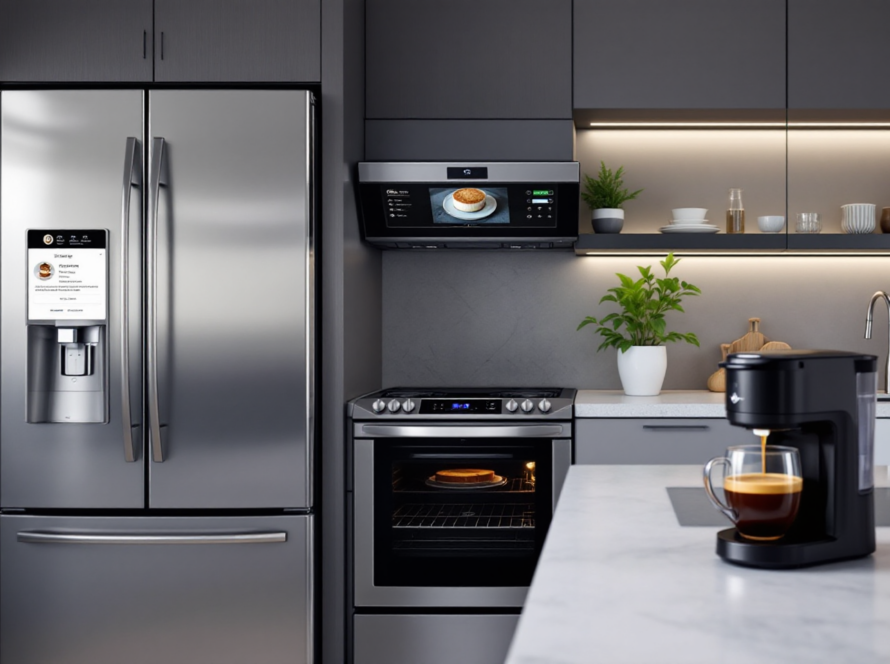When you’re investing in a home renovation, every design decision counts—especially in high-impact spaces like the kitchen and bathroom. These rooms not only influence how you live in your space but also significantly affect your home’s value. That’s why a cohesive kitchen and bathroom design isn’t just about aesthetics; it’s about harmony, flow, and functionality.
As specialists in full-service renovations, Capital Kitchen & Bath understands that unifying these spaces can create a home that feels purposeful and polished—whether you’re updating one room or undertaking a whole-house remodel.
TLDR – Quick Guide
- Stick to a consistent color palette for visual flow.
- Use complementary materials like cabinetry, countertops, and hardware.
- Unify design through lighting fixtures and metal finishes.
- Match design styles (modern, farmhouse, traditional) across rooms.
- Let floor plans and layouts support easy movement and function.
Detailed Breakdown
1. Color Consistency is King
Choosing a consistent color scheme is the easiest way to visually connect your kitchen and bathroom. For example, if your kitchen features navy lower cabinets with white uppers, echo this combination in the bathroom vanity. Neutrals, blues, and earth tones are timeless choices that make spaces feel fresh yet connected.
2. Match Your Cabinet and Countertop Finishes
Using similar materials in your cabinets and countertops is a surefire way to reinforce cohesion. While they don’t have to be identical, aim for materials that share texture, tone, or style. A marble-look quartz in the kitchen can be mirrored by a similar vanity top in the bathroom.
3. Hardware and Fixtures Matter More Than You Think
Think of your faucet finishes, cabinet handles, and lighting as the jewelry of your rooms. Consistent hardware in matte black, brass, or brushed nickel across both rooms helps tie everything together without being too matchy-matchy.
4. Stick to One Design Language
Avoid mixing radically different design styles. If your kitchen leans modern with sleek, handle-less cabinets and clean lines, a vintage-inspired bathroom will feel out of sync. Instead, create design continuity through shared architectural features, tile choices, or lighting aesthetics.
5. Flooring That Flows
If possible, use the same or complementary flooring in both rooms—especially if they’re located near each other. Luxury vinyl tile, natural stone, or even wood-look porcelain tiles are durable, stylish options that work well in wet zones and make your whole home feel more unified.
6. Don’t Forget the Details
Art, mirrors, lighting, and even towel hooks contribute to your design story. A consistent approach to accessories—like black-framed mirrors and sconce lighting—can subtly but powerfully reinforce the look.
Key Takeaways
- Unify your design with color palettes, cabinetry materials, and hardware finishes.
- Match styles, but don’t be afraid to allow each space its own personality within that framework.
- Flooring and lighting play crucial roles in maintaining visual flow.
- Cohesive design supports both aesthetic value and resale appeal.
- Partnering with full-service remodelers like Capital Kitchen & Bath ensures expert coordination across spaces.
FAQs
What is a cohesive kitchen and bathroom design?
A cohesive kitchen and bathroom design means both spaces visually and functionally complement each other. This includes shared styles, materials, colors, and layout considerations.
Can my kitchen and bathroom look different but still feel cohesive?
Yes, they can have unique personalities, but they should share core design elements like finishes, fixtures, or flooring to feel visually connected.
How do I choose colors that work in both rooms?
Start with a neutral base like whites, greys, or beiges, then layer in accent tones that you love. Use the same or complementary hues in both spaces to create balance.
Do I need to remodel both spaces at once to achieve cohesion?
Not necessarily, but it’s easier to plan for cohesion if you design them with a master plan—even if updates happen in phases. A remodeler like Capital Kitchen & Bath can help you map it all out.
What’s the biggest mistake people make with kitchen and bathroom design?
Going too trendy or using clashing styles. Consistency and timeless materials typically provide the best long-term satisfaction and ROI.


